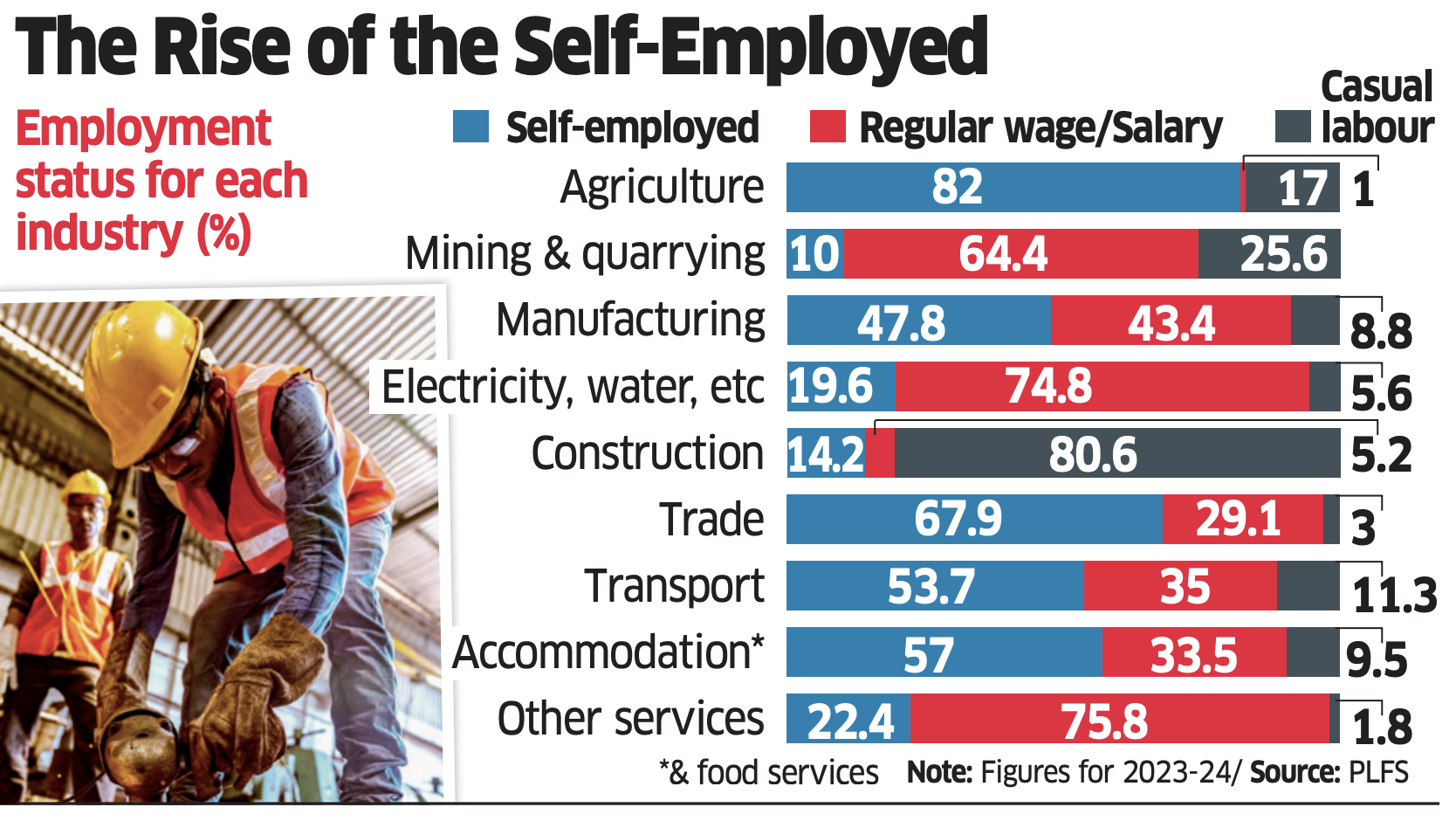[ad_1]
Nearly half the employees in the manufacturing sector are self-employed, reflecting the entrepreneurial nature of India’s vibrant startup ecosystem.
Latest data from the government’s Periodic Labour Force Survey (PLFS) showed about 48% of workers in the sector are self-employed, surpassing regular wage/salaried employees with a 43.4% share and casual labour at 8.8%. In 2018-19, the share of those self-employed was 43%.
Experts say the growing trend of self-employment in the sector could be due to a rapid expansion of the startup industry, creating a new generation of young entrepreneurs. A pickup in startups in India explains this rise, said Madan Sabnavis, chief economist at Bank of Baroda.

Other sectors such as agriculture, trade, transport, and accommodation & food services also have a high share of self-employed workers.
Self-employment Highest in Agri
The rise in self-employment in the transport sector could be due to the growth of ride-hailing services, according to Sabnavis.
According to Paras Jasrai, senior economic analyst at India Ratings and Research, “A higher self-employment share compared to regular wage earners indicates a trend towards informal work, possibly driven by job scarcity and the need for flexible income sources.”
Self-employment comprises two categories: own account workers/employers, and helpers in household enterprises.
According to the data, the majority of self-employed workers across sectors are own account workers/employers.
In manufacturing, 40% of self-employed individuals are in this category, compared to 7.8% working as helpers in household enterprises. This trend is consistent in both rural and urban areas.
A gender-wise breakup reveals that a higher percentage of women in manufacturing are self-employed (77.8%) than those in regular wage/salary roles (17.4%) and casual labour (4.8%).
Among men, regular wage/salaried employment is more prevalent at 57.5%, followed by self-employed (31.5%) and casual labour (11%).
Many women opened new businesses and are working from home, engaging in activities such as consultancy, design, and human resources, Sabnavis noted.
[ad_2]
Source link



